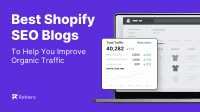You’re a one-man army if you freelance. You must be strong at marketing in addition to excelling at your services in order to create a network and bring in clients on a consistent basis.
It is critical for you to give clients reasons to come to you, particularly through digital media.
Inbound marketing, as opposed to traditional outbound marketing, focuses on obtaining clients’ attention through SEO, Paid Search, branding, social media marketing, and content marketing.
Moreover, Inbound marketing channels help you save money and stay in business longer.
Inbound marketing is a two-way process that involves attracting customers through content. It’s all about giving customers something of worth in exchange for their time and attention. There, trust and commitment are being built.
If freelancers begin to use inbound marketing, they will reap significant benefits.
Difference Between Inbound And Outbound Marketing
Inbound marketing is a method of attracting customers on a regular basis by generating demand through relevant content and meaningful experiences.
The Inbound Methodology creates personalized connections with potential buyers and offers solutions to problems they are already experiencing, effectively getting clients through inbound marketing.
Inbound marketing is based on all efforts that aim to acquire and retain customers, such as:
- SEO (Search Engine Optimization) is a term that refers to the process of optimizing
- User Experience (UX) that is tailored to the individual.
- Blogging
- Vlogging
- Storytelling
- Marketing with content
- Marketing with influencers
- Social media
Whereas, Outbound marketing entails interruptive marketing operations aimed at attracting new customers.
While inbound marketing is centered on the customer, outbound marketing is centered on the marketer and begins with the company reaching out to its target demographic.
It encompasses both traditional and digital marketing techniques, such as:
- Commercials on television
- Radio commercials
- Advertisements in print (ads in newspapers, magazines, flyers, brochures, catalogs, etc.)
- Exhibitions
- Outbound sales calls (cold calling)
- Spam (cold emails)
- Advertising that is obtrusive and interruptive on the internet (Facebook Ads, Google Ads, video ads, and so on)
Outbound marketing isn’t dead, and when done appropriately, it may still be beneficial. The optimum strategy starts with an inbound marketing strategy and then adds outbound marketing tactics to the mix.
Continue reading to learn how to do it correctly.
What Makes Inbound Marketing So Successful?
Before we get into how to use inbound marketing to develop your freelance business, let’s define what inbound marketing is and why it’s such a valuable strategy for small businesses.
For a variety of reasons, inbound marketing tactics are particularly beneficial for freelancers and small businesses including:
- Clients Come To You Through Inbound Marketing
Other classic marketing methods involve pursuing potential clients. Inbound marketing, on the other hand, brings clients to you rather than the other way around. Smart content not only generates quality leads but also aids in the development of your company’s reputation as a subject matter expert (SME), which can generate even more leads and potential clients than traditional techniques.
- More Leads Are Generated By Inbound Marketing Than By Outbound Marketing
Inbound marketing is simply more effective than typical outbound marketing tactics when measured directly. In fact, inbound marketing brings 54 percent more prospects into the marketing funnel than standard outbound lead nurturing, according to HubSpot.
- Inbound Marketing Will Continue To Produce Leads, In The Long Run
You must work hard to develop content using the inbound marketing process.
However, once the content is developed, it is complete. The inbound marketer just needs to create the content once, but the material will continue to generate leads for months (or even years!) to come.
Inbound marketing is a must-try. But how do you get started in the first place?
Let’s look at the actions you’ll need to take to create an inbound methodology that can help you grow your business:
4 Approaches That Freelancers Can Utilise To Get Started With Inbound Marketing
1. Create A Freelance Marketplace Profile
Begin by developing a presence. When you first start freelancing, attempt to establish a name for yourself in the industry. Develop your personal brand with a niche in mind.
Platforms like Refrens can help you find work in fields like graphic design, content writing, digital marketing, and many in-demand skills.
To acquire opportunities, create a professional profile or portfolio website on these networks and make it public. Clients can view your work on your freelance profile, which increases trustworthiness.
You’ll begin to attract clients who are looking for persons with your freelance skills. Your visibility grows and your professional reputation grows when you receive great feedback and delighted clients.
Getting work through a freelance marketplace assures security and decreases the danger of fraud while you’re just starting out in your career. How? The platform acts as a middleman between you and the customer, ensuring that you are paid on time for the project you work on.
2. Make The Most Of Your Social Media Presence To Attract New Customers
One of the most effective ways to market yourself as a freelancer is to use social media networks.
You can use professional profiles on social media sites like Facebook, LinkedIn, and Twitter these social media tools promote your work and establish thought leadership in your field.
Participate in a variety of online communities, forums, conversations, and groups through social media. This can help you expand your network, gain a better awareness of your competition, improve your understanding of the industry and your freelance niche, and strengthen your relationships and network.
Moreover, you can stay current and create outstanding content by increasing your visibility and communicating with like-minded people.
If you’re going to provide content on social media, make sure it’s relevant to your followers, that it’s consistent, and that it’s engaging for your audience by holding competitions, asking for comments, and so on.
3. Create A Drip Marketing Strategy
You can’t expect every quality lead to convert right away. You must follow up with folks who are still debating whether or not to work with you, as well as solicit input from those who have lately refused to work with you.
A drip marketing strategy is beneficial in cases where the client is unable to make a final decision.
Drip marketing is based on drip irrigation, which is a common agricultural method. Crops are nourished and grown via drip irrigation, which uses a precisely measured amount of water provided in “drips” over time.
Moreover, it is characterized by the concept of “dripping” pertinent information to clients at the right time. Drips, sometimes known as “touches,” are pre-planned occasions when a company contacts a customer, usually via email or other online platforms like VoIP platforms using virtual phone numbers.
As opposed to social media marketing, where success is influenced by a variety of things beyond your control, such as algorithms, a drip marketing strategy offers more control.
For this inbound tactic, create your blog. Always remember to concentrate on the content’s quality rather than its quantity. Make sure your content is up-to-date and relevant to your industry. The audience wants to know who is behind the brand, therefore share your experiences and perspectives on the topics.
Maintain a consistent tone on your blog. Make a blogging schedule if necessary. You can ask the audience to join your newsletter by asking them to sign up. In this manner, you may keep your customers and create an email list at the same time.
Additionally, Notify your subscribers when you publish a new post and include information about your services and skill set in the email.
4. Make Good Use Of SEO
Search Engine Optimization is an important part of inbound marketing. You want to reach out to your client in an organic way, and SEO can help you do that.
The foundation for this inbound marketing strategy is a well-built website. However, providing compelling material alone will not be enough if it does not receive widespread exposure across multiple channels on the internet.
To achieve the best results, you should concentrate on both on-page and off-page SEO.
Improve the visibility of your content in search engine results by optimizing it. This will not only drive traffic to your website but will also ensure that customers receive the solutions they want.
Moreover, learn SEO tactics and the technicalities of digital performance analysis to master this strategy.
These tactics will not yield results in a single day. Make an effort to be patient.
The aim should be the Long-term effects of these strategies.
Inbound Marketing Strategies Plan
Inbound marketing focuses on finding your target demographic and acquiring clients with helpful, relevant information, as opposed to outbound marketing, which “pushes” itself at a broad spectrum of people.
However, before you can generate that content, you must first determine your inbound marketing objectives—in other words, what you want your content to say.
- Be Extremely Clear In Your Communication
You must be clear on your messaging—and the results you want that messaging to produce—for your inbound marketing plan to be successful.
If your inbound marketing strategy’s goal is to attract potential clients to sign up for a free trial of your new product or service, for example, your message should focus on the problem your customers are facing—and how your products or services solve that problem.
The more precise your messaging, the more precise and focused your content will be—and the better it will perform as a result.
- Identify Your Perfect Customer
Your message will be relevant, helpful, and on point for the audience, you’re attempting to reach. If you define your ideal client and create buyer personas.
Based on market research, a buyer persona is a fictionalized depiction of a target consumer. Buyer personas depict your ideal customers, including how they spend their days, the problems they face, and the decisions they make.
The more relevant, helpful, and on-point your content is, the greater the outcomes your inbound marketing plan will provide.
- Decide On The Type Of Content You’ll Create
There are a plethora of methods to use content to raise brand recognition and generate leads, and deciding which sorts of material to focus on is an important aspect of developing a successful inbound marketing plan.
Inbound marketers can use a range of content channels to help them in their inbound marketing efforts, including:
- Posts on the blog
- eBooks
- Case studies are used to illustrate a point.
- Customer testimonials
- Emails
- How-to manuals
- Videos
- Content that is audio (like podcasts)
- Posts on social media
- Webinars
Every inbound marketing strategy is unique; you may choose to focus all of your marketing efforts on one or two types of content, or you may want to target your audience with several content forms.

Where Will You Create That Content?
The first element of the jigsaw is deciding what kind of content you want to generate; but, once you’ve decided what kind of content you want to create, you also need to pick where that material will dwell.
There are a plethora of locations where you can distribute information to generate interest in your company.
For example, suppose you decide to use blogging as part of your inbound marketing plan. You could host those blog entries on your website and utilize the content to collect each visitor’s contact information and email address—or you could offer to write guest articles on a leading industry blog to reach a different/bigger/potentially larger audience.
Figure Out What Content Is Successful in Your Industry—and Then Improve It.
There’s no need to reinvent the strategies when it comes to generating solid inbound tactics and crafting content that connects with and converts your audience.
All you have to do now is find out how to improve the strategies.
What Is Search Engine Optimization (SEO) For Skyscrapers?
The “skyscraper technique” is a content marketing strategy based on discovering the most useful content in your area and then working out how to improve it to make it even more valuable.
The skyscraper technique was created as a link-building/SEO strategy, but it can be applied to inbound marketing just as readily.
You might notice, for example, that one of your competitor’s blog entries is gaining a lot of momentum with your target audience. Instead of beginning from scratch, you can use the theme or idea from the competitor’s blog post and produce your own. Make sure your blog article is more valuable material than the original by adding information, insights, and/or resources.
To be clear, you should never plagiarise or steal someone else’s work. You want to leverage existing material (that is performing well in the search engines) as inspiration for the skyscraper strategy, and then discover ways to a) improve it and b) put your spin on it in a way that offers more value for your audience.
Make Use Of The Proper Tools
You’ll need the necessary tools to be as effective as possible with your approach, which includes tools for creating, optimizing, and analyzing your content and performance.
Your content strategy will determine which tools you need. If you’re focusing on written content, for example, you could use an insight tool (like BuzzSumo) to find top-performing content, a grammar tool (like Grammarly) and a Paraphraser tool (like Paraphrase Online) to ensure your copy is correct, and an inbound marketing tool (like HubSpot) to track your content’s performance and manage your prospects.
Prioritize Quality
You might believe that inbound marketing for small businesses is all about churning out content 24 hours a day, seven days a week. The truth is, it’s not about how much material you make as much as it is about how helpful, relevant, and beneficial that information is to your audience.
When implementing a strategy, quality should always take precedence over quantity. Remember, the goal of inbound marketing is to generate leads, and publishing one fantastic piece of content each month is significantly more likely than writing three average pieces of content per week that don’t bring any real value to your audience.
Conclusion
Inbound marketing can help you create stellar content and generate leads for your company.
One of the most effective tactics for interacting with your audience and generating new leads for your organization is inbound marketing.
What’s left to do now that you’ve learned the best practices for creating a powerful inbound marketing strategy from the ground up?
Get out there, establish your inbound technique, and start using content to generate leads—whether through social media, search engine results pages, or content marketing on your company’s website.
With Refrens’ education blog, you may also obtain suggestions on how to produce content and what type of material to write. Reading those articles will provide you with a notion of how content should be written.


















